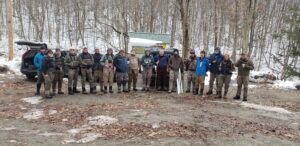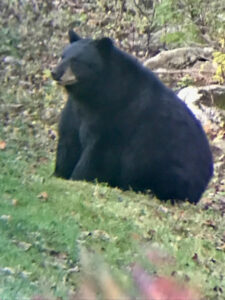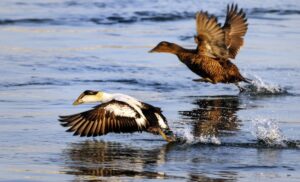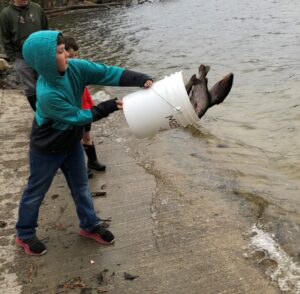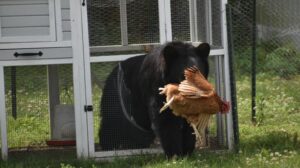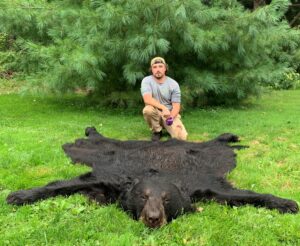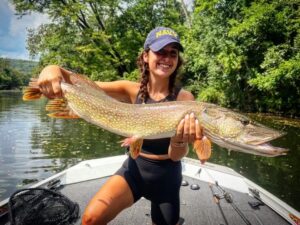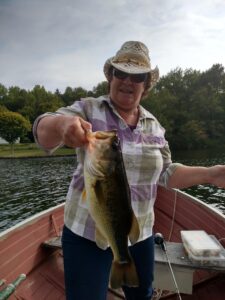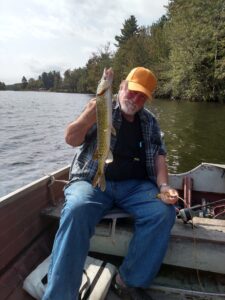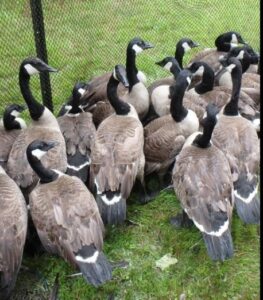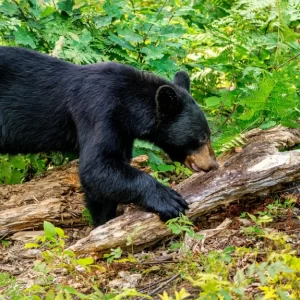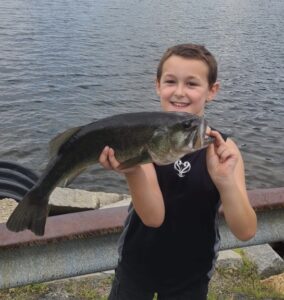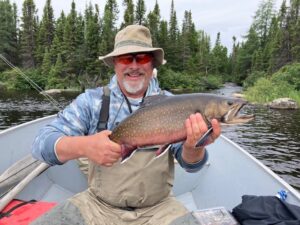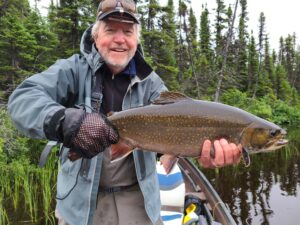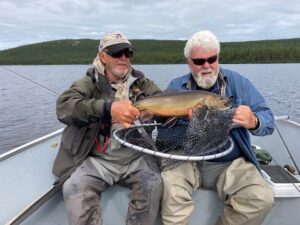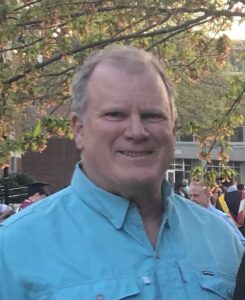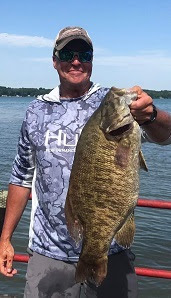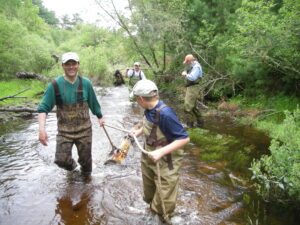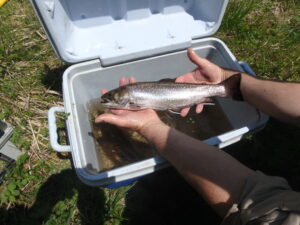Background: Wild Brown Trout Spawning Studies conducted by the Deerfield River Watershed Chapter of Trout Unlimited (DRWTU) volunteers, under the guidance of Dr. Michael Cole, of Cole Ecological, Inc. of Greenfield, in 2017, and Dr. Erin Rodgers, of Trout Unlimited, in 2018, documented that brown trout were successfully spawning in the upper Fife Brook section of the Deerfield River.
But the studies also revealed that winter conditions were destroying many of the eggs during periods of minimum flow. The irrefutable results in these studies convinced MA Department of Environmental Protection (DEP) that the damage to wild trout from Fife Brook’s winter flow regime needed to be addressed. Thank goodness, the DEP declined to authorize the Water Quality Certificate – mandated in the FERC re-licensing process – until this issue could be resolved.
The outcome was an Agreement negotiated between DRWTU (under the umbrella of Trout Unlimited, Inc), MA Division of Fisheries & Wildlife, MA Division of Natural Heritage and Endangered Species, Brookfield Renewable Power and MA DEP that will benefit the wild brown trout as well as other aquatic organisms in the river. It is noteworthy that DRWTU was the only non-governmental agency that signed-on to be an Intervenor in the process.
An Agreement with Brookfield Renewable Power Company will allow for increased minimum winter flows from their Fife Brook Dam and Bear Swamp Pump Storage Operations on the Deerfield River. The Agreement was approved by MA DEP Commissioner Martin Suuberg on September 27. The Agreement is part of DEP’s Water Quality Certification process, which is directly tied to the Federal Energy Regulatory Commission’s (FERC) Re-Licensing of Brookfield’s Fife Brook Dam and Bear Swamp Pump Storage Operations. In late 2025 or early 2026, the winter minimum flow at Fife Brook Dam will increase from 125 cubic feet per second (cfs) to 225 cfs for the period from November 1 to April 15 every year going forward.
The Agreement also provides for a $125,000 fund, paid by Brookfield Power, for ecological projects on the Deerfield.
“This is a huge victory for the ecology of the river,” said Eric Halloran, president of the DRWTU. “We know from our spawning studies that the lack of water during minimum flows was killing off nearly 40 percent of the trout redds (nests) and eggs over the course of the winter. The eggs suffered as a result of being de-watered, exposed to the air, and frozen. The minor increase in river flow negotiated in this agreement will keep the eggs covered with water throughout the winter and allow more eggs to hatch in the spring. More trout will hatch and increase the number of wild fish in the river.”
“Achieving Intervenor status gave us a seat at the table and a stronger bargaining position than we could ever have achieved by simply commenting on the outcome from the sidelines.” Halloran noted. “We’re incredibly pleased with this outcome and there were many years of hard work and countless hours of volunteer time that led to this moment.” Halloran specifically praised Springfield attorney Christopher Myhrum, who specializes in environmental law, for volunteering his services to lead the negotiation effort. Halloran also thanked former DRWTU President and Vice-President Kevin Parsons, Esq., and Christopher Jackson, a veteran fishing guide on the Deerfield, for pushing DRWTU’s agenda in the re-licensing process for 10 years.
DRWTU hopes that this historic achievement will be a crucial step in creating the Commonwealth’s first Wild Trout Management Area, where an improved ecosystem will allow fly fishers of today and tomorrow to appreciate a healthy population of wily, wild Brown Trout.”
Personally, I am particularly proud that our local chapter of TU (Taconic Chapter) helped in this effort by contributing funds and volunteer hours during this process. Well that they should, for many local anglers fly fish that river. But the bulk of the work was conducted by the DRWTU volunteers. Congratulations fellow anglers for the job well done. You have made Massachusetts’ premier trout river even better.
Time to bone up on our hunting laws
Now that many of the hunting seasons are open, hunters are (or should be) aware of the various regulations governing them. Laws governing such subjects as daily harvest totals, hunting tags, the type of hunting tools allowed, hunter red requirements, etc. are generally known by hunters and are abided with in order to stay out of trouble with the law.
But tucked away in the abstracts are other not so obvious regulations which can also get you into trouble if violated. Let’s review some:
Tree Stands: Written permission of the landowner (on either public or private lands) is required to construct or use any tree stand which is fastened to a tree by nails, bolts, wire, or other fasteners that intrude through the bark into the wood of the tree, or that is fastened or erected in any manner and is emplaced for a period exceeding 30 days. This includes hang-on tree stands.
Landowner permission: Hunting, fishing, and trapping are permitted on private land that is not posted against trespass; however, some towns have bylaws that require written permission. As a courtesy, ask the landowner for permission in advance. If you plan to use wildlife/trail cameras on private land, seek permission for that activity as well. Landowners with posted land may provide (written) permission for individuals to access their property. Written landowner permission is required to trap on posted land.
Hunters should check for relevant town bylaws pertaining to any written permission requirements and restrictions on discharge of firearms.
Landowner Liability: Landowners permitting use of their property for recreation without charging a fee are not liable for injuries to recreational users of the property except in cases of willful, wanton, or reckless conduct by the owner.
Careless and negligent use of firearms: Fines of up to $500 and/or 6 months imprisonment and loss of license for 5 years. In some cases, licenses could be revoked for one year in addition to other penalties; fines of up to $1,000, restitutions, and/or one year in jail.
Use of handguns: Handguns are not allowed for deer hunting and may not be in your possession while deer hunting.
Animals tagged for research: Some bear, deer, coyotes, and other animals may have ear tags or radio collars. It is legal to harvest them. If you find or take one of these animals, contact MassWildlife’s Field Headquarters (508) 389-6300 immediately. You will be asked for information that will help biologists determine the source and status of these animals and you will be asked to return the equipment to MassWildlife.
Hunter harassment: No person shall obstruct, interfere with or otherwise prevent the lawful taking of fish or wildlife by another at the locale where such activity is taking place. It shall be a violation for a person to intentionally (1) drive or disturb wildlife or fish for the purpose of interrupting a lawful taking; (2) block, follow, impede or otherwise harass another who is engaged in the lawful taking of fish or wildlife; (3) use natural or artificial visual, aural, olfactory or physical stimulus to effect wildlife in order to hinder or prevent such taking; (4) erect barriers with the intent to deny ingress or egress to areas where the lawful taking of wildlife may occur; (5) interject himself into the line of fire; (6) effect the condition or placement of personal or public property intended for use in the taking of wildlife; or (7) enter or remain upon public lands, or upon private lands without the permission of the owner or his agent, with intent to violate this section.. A person who sustains damage as a result of any act which is in violation of this section may bring a civil action for punitive damages. Environmental protection officers and other law enforcement officers with arrest powers shall be authorized to enforce the provisions.
This section shall not apply to the owners of the lands or waters or tenants or other persons acting under the authority of such owners of the lands or waters.
Wanton Waste: And, of course, there is the recently enacted Wanton Waste laws where it is unlawful for any person while hunting or trapping to waste an animal. Each retrieved animal shall be retained or transferred to another until processed or used for food, the pelt, feathers, or taxidermy.

